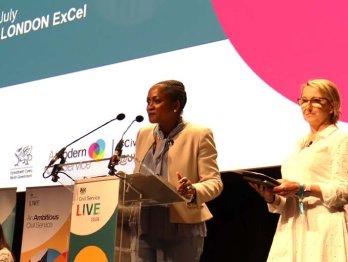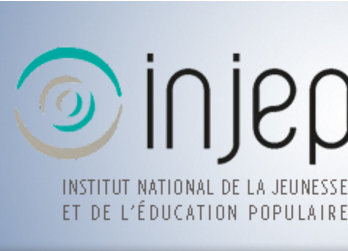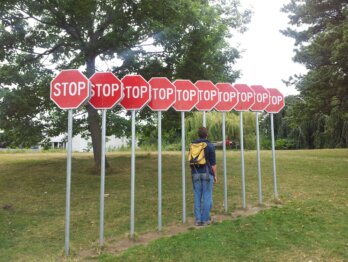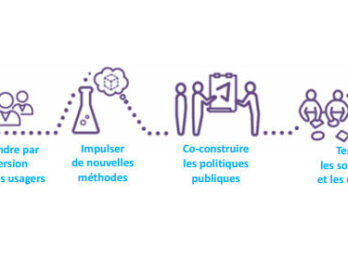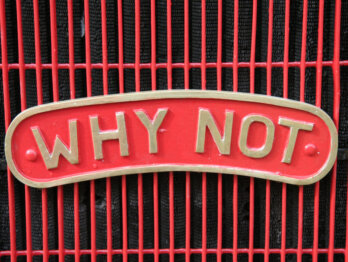Politeness as process, manners as method
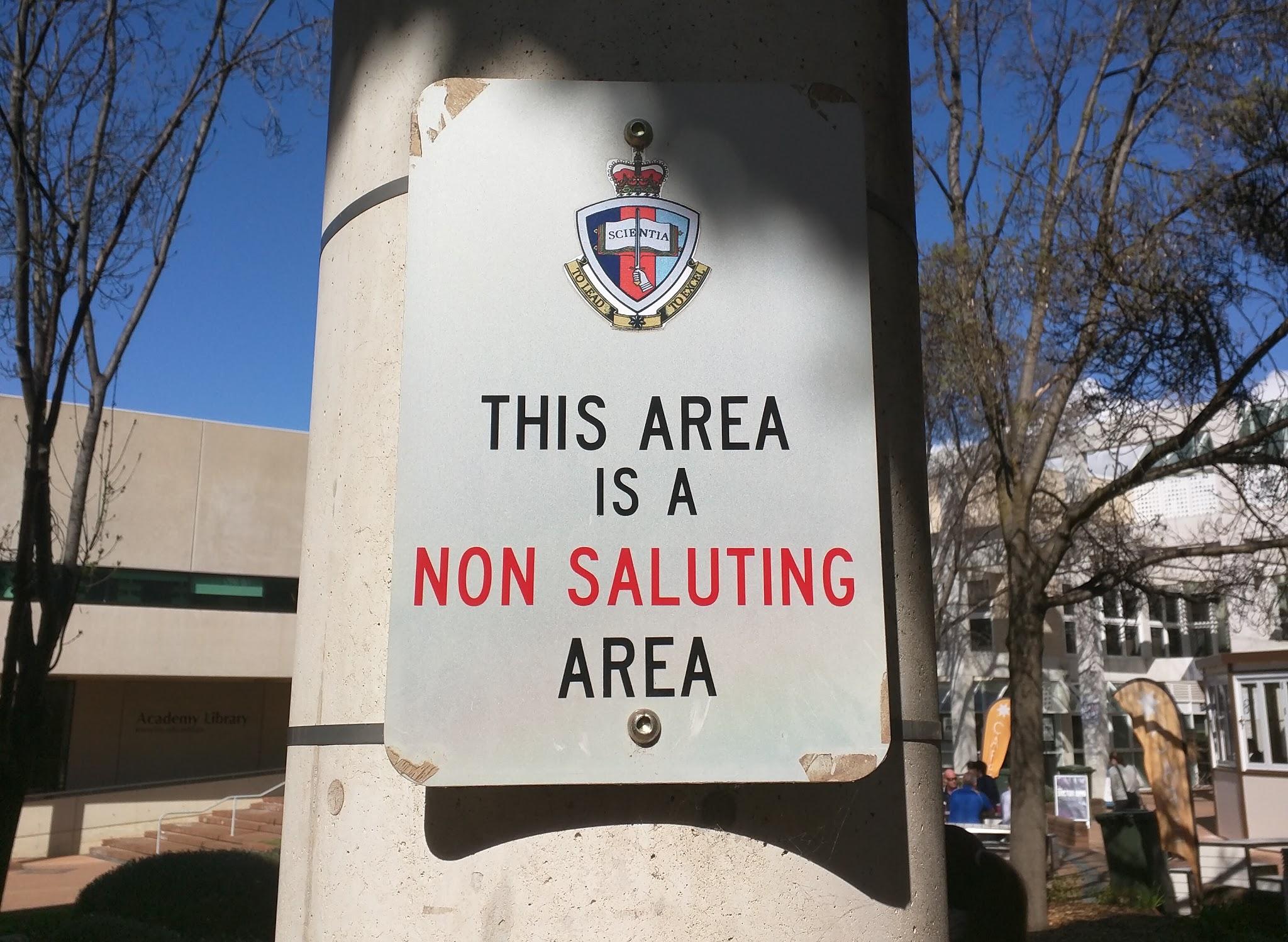
If you have a good idea, does being polite help or hinder you when you try to introduce it? Or to put it another way, if you have an innovative proposal that you want to pursue, do you need to be good at dealing with established processes, or is it more important to be comfortable with upsetting the apple cart? In this post I want to explore the relationship between innovation and process, and I’m going to try to use the topic of politeness as the means by which to do so.
Innovation and process
If we consider the relationship between innovation and process, I think it is fair to say that it is not always a comfortable one. Processes, things done in order to achieve something else, are usually about replicating and optimising existing patterns of activity, whereas innovation is about doing things differently, or doing new and different things. Innovation is a process in itself, but not one that always plays well with other processes (e.g. project management).
Quite often innovation is seen as being in conflict with other processes as it upsets how things are “meant” to be done. At the same time innovators can often have complaints about regulations or compliance requirements that they see as getting in the way of achieving the innovation. Process hurdles are usually seen as a blocker to innovation, and innovation can be seen as a hindrance to smooth process.
Yet there will always be hurdles that might get in the way. Processes, whether about management, accountability, compliance or finance, will always exist in some form. Innovation, the act of doing what has not been done before, will always hit up against existing processes in some way. Therefore innovation cannot simply rely on the absolute removal of other processes. The act of innovating requires some form of negotiation, navigation or negation of processes.
To explore what that might look like, it is worth considering one of the oldest processes that exists: politeness.
Politeness as process
Politeness is something that is often taken as an end in and of itself. It is considered important to be polite. Yet what it is to be polite varies. In some cultures and some countries a lot of emphasis is placed on the forms of interaction. e.g. in France it is very rude not to acknowledge and greet other people in a range of casual interactions, whereas in other places it is not as much of a concern. Other cultures have more informal notions of what it to be polite. e.g. Australians are quick to use people’s first names, can often be quite direct, and often value punctuality. Therefore there are many different things that can be considered polite, depending on the setting.

This variance, this contextual nature, identifies politeness as a process rather than an inherent good. It is something that varies depending on the context, and it is something that is done in order to achieve something else. This something else might be about indicating respect, demonstrating consideration, avoiding conflict, acting as a form of acknowledgement, or just trying to make the day nicer. The politeness itself is not the true value, rather it is a means by which to demonstrate something else. Politeness is a process; though perhaps the oldest and most embedded.
As a process, politeness serves many uses. It makes interaction with strangers easier, and often more efficient. And frankly, it would be pretty unpleasant to not have it, as every social interaction would have to be negotiated individually rather than being able to rely on common expectations. Yet, like any process, it involves trade-offs. What is polite often reflects existing power structures, and reinforces existing patterns of interaction. It is usually considered rude to challenge your boss, or to challenge someone in a position of authority. The need to be polite can be used as a means to avoid issues, to avoid conflict, to avoid talking about difficult issues. In many settings, no one really expects the answer to “how are you?” to be “pretty bad; I’m not coping; things are just not working; this whole situation is just a mess”. Politeness, manners, and doing what is expected can make it hard to do the unexpected, to ask difficult questions, to say that things need to change. It can make it hard to propose new things, in case it offends someone who might prefer, or benefit from, the existing way that things work.
In other words, politeness can be a hurdle to innovation. Indeed, it is possibly the most fundamental one.
Navigating norms
Just as with other processes, that does not mean politeness can (or should) be abandoned in the pursuit of innovation, in the act of trying to do things differently in order to realise better possibilities.
No one wants to work or live in a world where there isn’t an emphasis on respect, on consideration or even just acknowledgement. We are social animals, and manners are an important part of our relationships; more so with strangers who don’t have the personal knowledge of our underlying motives, behaviours, etc, and where no-one wants to start interacting without some basic parameters in place. Politeness is a vital social lubricant for a functioning and cohesive society. Like most processes, it has been introduced for good reason, and having a set expectation of what to do is easier than having to engage with every person, with every social setting on a case by case basis.
Politeness cannot be left unquestioned however. Politeness can serve to stop, usually without intent, the exploration and consideration of new possibilities that might make things better. It can stop people really asking what the problem is, and what the best way of dealing with it might be.
Therefore a compromise often needs to be negotiated. And as with other processes, this usually requires those undertaking innovation to be either better at processes, able to selectively avoid them, or to subvert them. Innovators – the people who try to change the status quo in new ways – often to need to have a better understanding or instinct for processes than others. Those who are content to stick with the status quo can simply follow what is expected and do whatever it is that is “proper”. Whether they are sincere about it may not actually matter – the same result is achieved either way. Compliance, following the form, can in many ways be a tick-and-flick exercise. It is easy to be polite if you simply go along with what is expected.
Those who wish to change things however do not get to simply follow the script. To be effective, they need to understand the script, to understand how and when it can be changed, and be willing to actually go ahead and change it. They need to be brave enough (or oblivious or naive enough) to sometimes risk being seen as rude, as unusual, as strange, as deviating from the norm. They need to know that politeness is not a value in and of itself, but a means to an end. If politeness must occasionally be sacrificed, the innovator may need to ask themselves, how else can the underlying ends still be met? In the public sector, where the right to act is dependent upon the legitimacy and intentions of the actors, the innovator cannot (and probably would not want to) ignore such concerns.
In short, it requires looking at manners as a method, as a tool for achieving other ends.
Manners as method
How can manners be used as a method for negotiating the tension between holding to the underlying values (respect, consideration, etc.) and being effective (opening the space for the new to be considered)?
One way is for those making the case for change to be “expert users” of manners. In this situation, it might be about ensuring that the forms and the steps of being polite are followed to the maximum, in order to create sufficient comfort for something different to be considered. For instance, it might be about managing to use manners to really convey sincerity, to really convey respect and consideration, so that those being engaged with feel safe and not being challenged as individuals. Depending on the setting however, this can be difficult and take time and repeated contact to ensure the patterns are viewed not as performance, but as authentic. There must be trust.
Where circumstances, preferences or abilities may not allow that as an option, a second strategy might be to subvert the manners. For Australians, one of the best known examples of this is to use humour or directness, in order to cut through the procedural and to get to the substantive. This may not always be welcome however, and in some contexts may be seen as inappropriate or insulting. An alternative option is to flipping the politeness expectations over, and attempt to switch where the burden for politeness lies. For instance, it might involve bringing the voices of those with the problem into the conversation – the burden of politeness can then fall on those defending the status quo, as they have to justify why these complaints are not important. Or another option might be to involve changing how the conversation is seen – e.g. having it in an open forum with a wider range of actors will generally weaken the power of politeness in the context of more pressing needs (to be seen to be effective, to be listening, etc.). This too, however, can have costs, as it may be interpreted as subversion and therefore a form of disrespect to those who view themselves as having control or authority, rather than as an intention to navigate constraints that are blocking new possibilities.
Another strategy is to try to create a temporary exception to the normal processes. For instance, this might be about changing the default settings for particular circumstances, in order to allow politeness to be “deprioritised”. An example might be to set up meeting procedures where it is not only possible but expected to be “impolite” by allowing the challenging of closely held positions, assumptions or values. However, this is likely to often be uncomfortable and not something that is likely to be appreciated or engaged with where there is not a high level of trust and familiarity and reassurance that the questioning is not “personal”.
Of course it is also possible to change what is normal, what is polite. Politeness is not a static thing, and new behaviours, new expectations of what is “polite” can be created; however this is unlikely to be easy. Politeness generally reflects and favours the dominant power structures. It could be expected that such a change would require strong, consistent and emphatic leadership.
Perhaps the final option is that of confrontation or the abrogation of politeness. In such a situation, the “rules” of politeness can be thrown out, to push the issues and to force open the range of the possible being considered. However, this can carry a lot of risk, involving personal reputations and relationships. Such confrontation can easily involve a values clash, when one side may view the situation through a lens of what might be needed, and the other through a lens of what should be tolerated. Such confrontation can easily make things worse.
Ideally, the best options would likely include the alignment of values, the time and space to ensure that everyone believes that everyone else involved has aligned motivations and is approaching the exercise in good faith. It would involve established relationships where there is trust. However, this is often unlikely to be an available or feasible option. Those trying to change the status quo in new ways, to innovate, may also not be well positioned to do so.
Subversion not manipulation
Public sector innovation should involve good faith, and be in alignment with the values that underpin politeness – consideration and respect. If this is not the case, then the innovation is unlikely to be sustainable, either as a single intervention, or in the longer term as a process when the same actors may be involved again.

What can politeness as process teach us about innovation?
Innovation will inevitably involve clashes with existing processes. This exploration of politeness as a process is intended to illustrate that innovation often actually requires mastering process rather than ignoring it, avoiding it, or removing it. Processes are important, and may signify some deep underlying values that must be acknowledged and addressed if innovation is to be successful. If this acknowledgement does not occur, then there is the risk that innovation will be seen as an intrusion, rather than as an attempt to realise new and better possibilities.
In addition, politeness as process helps to remind us that just as innovation (the process of generating and applying new ideas) is not an end in itself, nor are many of the things that might be taken for granted. Effective innovation requires identifying the underlying values and assumptions behind the status quo and asking whether that is the best that might be possible. This can rarely be done without challenging existing understandings, something that is often uncomfortable, and in many settings, something that can feel impolite or even potentially taboo.
In a public sector setting, it is perhaps incumbent on all of us to ensure that those who are brave, reckless or naive enough to attempt to question the unquestionable, to ask the unaskable, are not viewed as being rude or ill-mannered, but rather are aided in considering whether something different might be possible. Innovation is not an excuse for being impolite, but the status quo is rarely a good enough reason for avoiding discussion of whether a better way might be possible.

